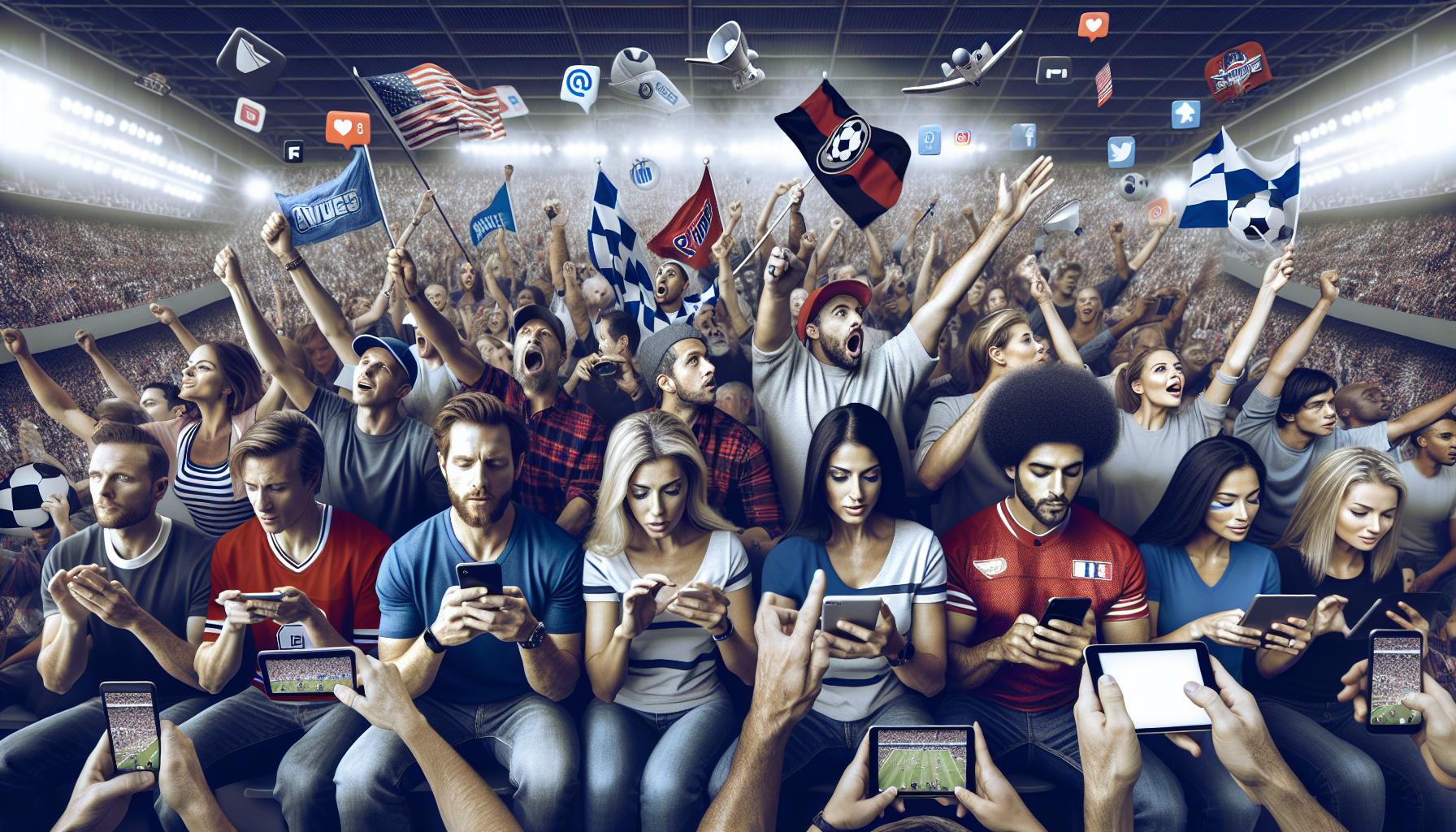In the fast-paced world of sports, marketing trends can change quicker than a last-minute game-winning shot. As 2020 rolled in, it brought a fresh wave of strategies that left traditional methods in the dust. From the rise of influencer partnerships to the growing importance of digital engagement, this year has been a game-changer for brands looking to score big.
Forget the days of generic ads and bland promotions. Today’s sports marketing is all about connecting with fans on a personal level, and let’s face it, who doesn’t want to feel like they’re part of the action? Whether it’s leveraging social media or embracing technology, the trends of 2020 are reshaping how teams and brands engage with their audiences. Get ready to dive into the exciting world of sport marketing trends that are not just keeping pace but setting the tone for the future.
Sport Marketing Trends 2020
Sport marketing in 2020 demonstrates a clear shift towards innovative strategies, departing from conventional approaches. Influencer partnerships gain momentum, allowing brands to leverage the credibility of athletes and social media personalities. Digital engagement plays a crucial role, enabling real-time interactions between brands and fans.
Engagement through social media platforms contributes significantly to this trend. Brands create tailored experiences and focused campaigns that resonate with target audiences. Technology integration enhances these efforts, offering immersive fan experiences through augmented reality and virtual reality applications.
Understanding fan behavior became vital in shaping marketing initiatives. Data analytics provides insights into preferences, enabling brands to craft personalized campaigns. Engagement metrics influence marketing strategies, emphasizing content that creates a genuine connection.
Sustainability and social responsibility emerged as key components of marketing strategies in 2020. Brands prioritize transparency and align marketing efforts with social causes, appealing to the ethically conscious consumer.
E-commerce integration provides seamless purchasing experiences for fans, allowing brands to capitalize on immediate interest. Cross-promotion with other brands or industries fosters a collaborative marketing approach, increasing visibility and reach.
Emerging platforms such as TikTok attract younger audiences, prompting brands to explore new avenues of engagement. Each of these trends reflects a dynamic landscape, pushing brands to adapt and innovate continually within sports marketing.
Digital Transformation in Sports Marketing

Digital transformation has reshaped sports marketing by placing emphasis on innovative tools and strategies. Brands leverage the digital landscape to foster connections with fans, adapting quickly to emerging trends.
Rise of Social Media Marketing
Social media marketing flourished in 2020 as brands seized opportunities to engage fans actively. Platforms like Instagram and Twitter provided direct channels for communication. Brands partnered with influencers, amplifying their reach and fostering credibility. Content became more visual and relatable, with posts tailored to resonate with specific audiences. Each platform hosted unique campaigns, targeting demographics based on behavior and preferences. Authenticity in messaging strengthened brand loyalty, as fans preferred genuine interactions over traditional advertisements. Specialized hashtags encouraged community involvement, enhancing the overall fan experience.
Enhanced Fan Engagement through Technology
Technology enhanced fan engagement significantly in 2020, offering immersive experiences. Augmented reality and virtual reality applications drew fans closer to their favorite teams and events. Mobile apps became essential for live updates and interactive game features. Gamification saw a surge, with fans participating in contests and challenges through digital platforms. Data analytics played a vital role in understanding fan behavior, allowing for personalized marketing efforts. Engaging content, such as behind-the-scenes footage, captivated audiences. Seamless integration of e-commerce solutions facilitated easy access to merchandise, further strengthening fan loyalty.
Sustainability in Sport Marketing

Sustainability has become a key focus in sport marketing, reflecting a growing commitment to environmental responsibility. Brands increasingly recognize the importance of eco-friendly practices to attract ethically conscious consumers.
Eco-Friendly Initiatives by Brands
Brands are embracing eco-friendly initiatives, demonstrating their commitment to sustainability. Many organizations adopt sustainable materials in merchandise, ensuring products are environmentally responsible. Eco-conscious packaging has gained traction, reducing waste associated with traditional options. Events increasingly incorporate sustainability into their planning, with practices such as zero waste strategies and carbon footprint reduction. Partnerships with green organizations enhance credibility and showcase dedication to environmental causes. Companies like Adidas launched eco-focused products, engaging consumers in meaningful conversations about sustainability while promoting their initiatives.
Fan Preferences for Sustainable Brands
Consumer preferences favor brands that prioritize sustainability, making eco-friendliness a crucial marketing strategy. Survey data indicates that 70% of fans prefer to associate with brands demonstrating commitment to social and environmental impact. Younger demographics, particularly millennials and Gen Z, show a strong inclination towards supporting sustainable practices. This shift creates pressure for brands to adopt sustainable methods while catering to consumer values. Engaging campaigns highlighting sustainable efforts resonate with audiences, fostering brand loyalty. Fans appreciate transparency in sourcing and manufacturing, valuing companies that share their sustainability journeys openly.
Influencer Marketing in Sports

Influencer marketing transformed sports marketing in 2020, enhancing brand connections with fans. Increased reliance on social media platforms propelled brands to collaborate with influential figures.
The Impact of Athlete Endorsements
Athlete endorsements significantly drive brand visibility and fan loyalty. Research shows that 94% of fans are more likely to purchase products endorsed by their favorite athletes. High-profile endorsements generate authentic connections, emphasizing shared values between brands and fans. Athletes leverage their personal stories, creating relatable content that resonates with audiences. Additionally, endorsements often extend beyond traditional advertisements, incorporating storytelling and behind-the-scenes content. Brands that align with popular athletes succeed in reaching target demographics effectively.
Emergence of Micro-Influencers
Micro-influencers gained traction as powerful marketing tools within the sports industry. Defined as influencers with 1,000 to 100,000 followers, they often boast higher engagement rates compared to their macro counterparts. Approximately 60% of consumers trust recommendations from micro-influencers, highlighting their authenticity. Brands targeting niche markets benefit from collaborating with these individuals, who typically have strong connections with their followers. Consequently, micro-influencers create content that feels more genuine and relatable, fostering deeper audience engagement. This trend showcases the shift towards personalized and impactful marketing strategies in sports.
Data-Driven Marketing Strategies
Data-driven marketing strategies emerged as essential for sports brands in 2020. Personalization and analytics became pivotal in enhancing customer experiences and informing decision-making processes.
Personalization for Enhanced Customer Experience
Personalization tailored marketing efforts to individual fan preferences. Brands utilized data to create targeted campaigns aligned with fan interests. Engaging content resonated with audiences, making fans feel valued and understood. This approach inspired deeper connections, resulting in increased loyalty. Brands refined messaging based on fan interactions, ensuring relevance and impact. Surveys indicated that 70% of fans preferred personalized content, showcasing its significance. Customized promotions and offers drove higher conversion rates, maximizing brand engagement.
The Role of Analytics in Decision Making
Analytics played a crucial role in shaping marketing decisions. Data insights provided clarity on fan behavior, preferences, and purchasing patterns. Brands employed analytics tools to track engagement metrics and campaign performance. Effective use of this data informed strategic choices for future initiatives. Understanding audience demographics also facilitated targeted outreach and improved messaging. Analysis revealed trends in fan interests, enabling brands to adapt quickly. Ultimately, leveraging analytics allowed brands to optimize their strategies for maximum impact.
Significant Transformation Driven by Innovation and Technology
The landscape of sports marketing in 2020 reflects a significant transformation driven by innovation and technology. Brands that embrace digital engagement and sustainability are not just staying relevant but also building stronger connections with fans. The rise of influencer partnerships and data-driven strategies underscores the importance of authenticity and personalization in marketing efforts.
As the industry continues to evolve, staying ahead of trends like immersive experiences and e-commerce integration will be crucial. By aligning with social causes and adapting to consumer preferences, brands can cultivate loyalty and enhance their visibility. The future of sports marketing is bright for those ready to innovate and engage meaningfully with their audiences.



